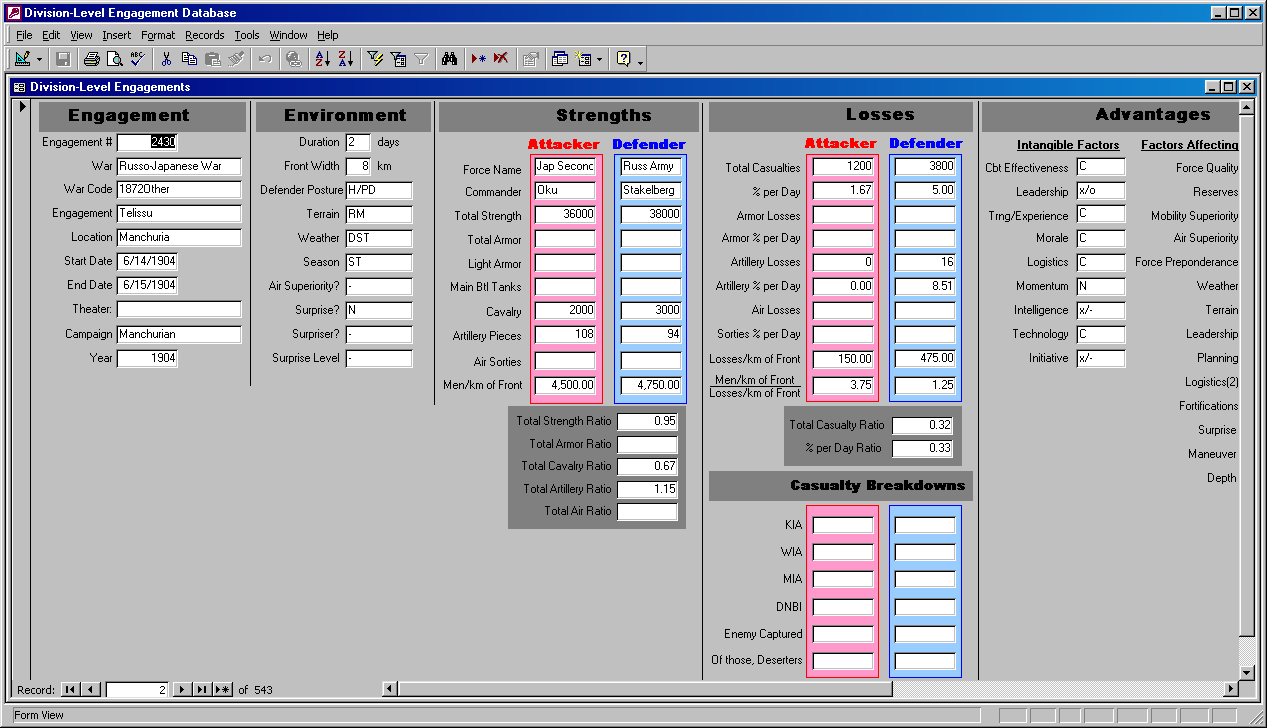
Yes, I still use data base as two words, much to the annoyance of Jay Karamales.
Anyhow, War by Numbers does rely extensively on a group of combat data bases that were developed over several decades. The earliest versions were developed in the 1970s and they were assembled into a large data base of around 600 cases in the 1980s. They were then computerized (they were originally a paper data base), re-organized, re-programed in Access, and greatly expanded. The data bases we currently have include:
Conventional Combat Data Bases:
LADB = Large Action Data Bases of 55 cases
DLEDB = Division Level Engagement Data Base of 752 cases
BLODB = Battalion Level Operations Data Base of 127 cases
CLEDB = Company Level Engagement Data Base of 98 cases
SADB = Small Action Data Base of 5 cases
BaDB = Battles Data Base of 243 cases from 1600-1900
We also have:
CaDB = Campaign Data Base of 196 cases. While the other data bases address battles, or engagements of no more than a few days in length, this one summarizes campaigns, often extending for months.
Finally we have three databases tracking campaigns from day-to-day. They are all programmed in Access:
ACSDB = Ardennes Campaign Simulation Data Base (meaning Battle of the Bulge)
KDB = Kursk Data Base
Battle of Britain Data Base
These were primarily intended for model validation efforts.
We also have three insurgency/peaceeping/intervention/OOTW (Operations Other than War) data bases. They are:
WACCO = Warfare and Armed Conflict Data Base of 793 cases
SSCO = Small Scale Operations Data Base of 203 cases
DISS = Dupuy Insurgency Spread Sheets of 109 cases.
The DISS data base was the one that America’s Modern Wars is based upon. The other two were earlier efforts.
These links provides some snap shots of the data base content: http://www.dupuyinstitute.org/dbases.htm
These are all company proprietary, although some have been released publicly in earlier forms or different forms (including the CHASE data base of 599 cases, the ACSDB in Dbase III and the KDB in Dbase IV). Our versions have been updated, including revisions to content.

Are any available for purchase?
Well, this is the subject of my post tomorrow. They are, but not at a price that any individual would want to pay. I have to assume that once I sell a database, I loose control of it.
I usually rely on my own, takes decades. Some data is extremely difficult to nigh impossible to obtain though.